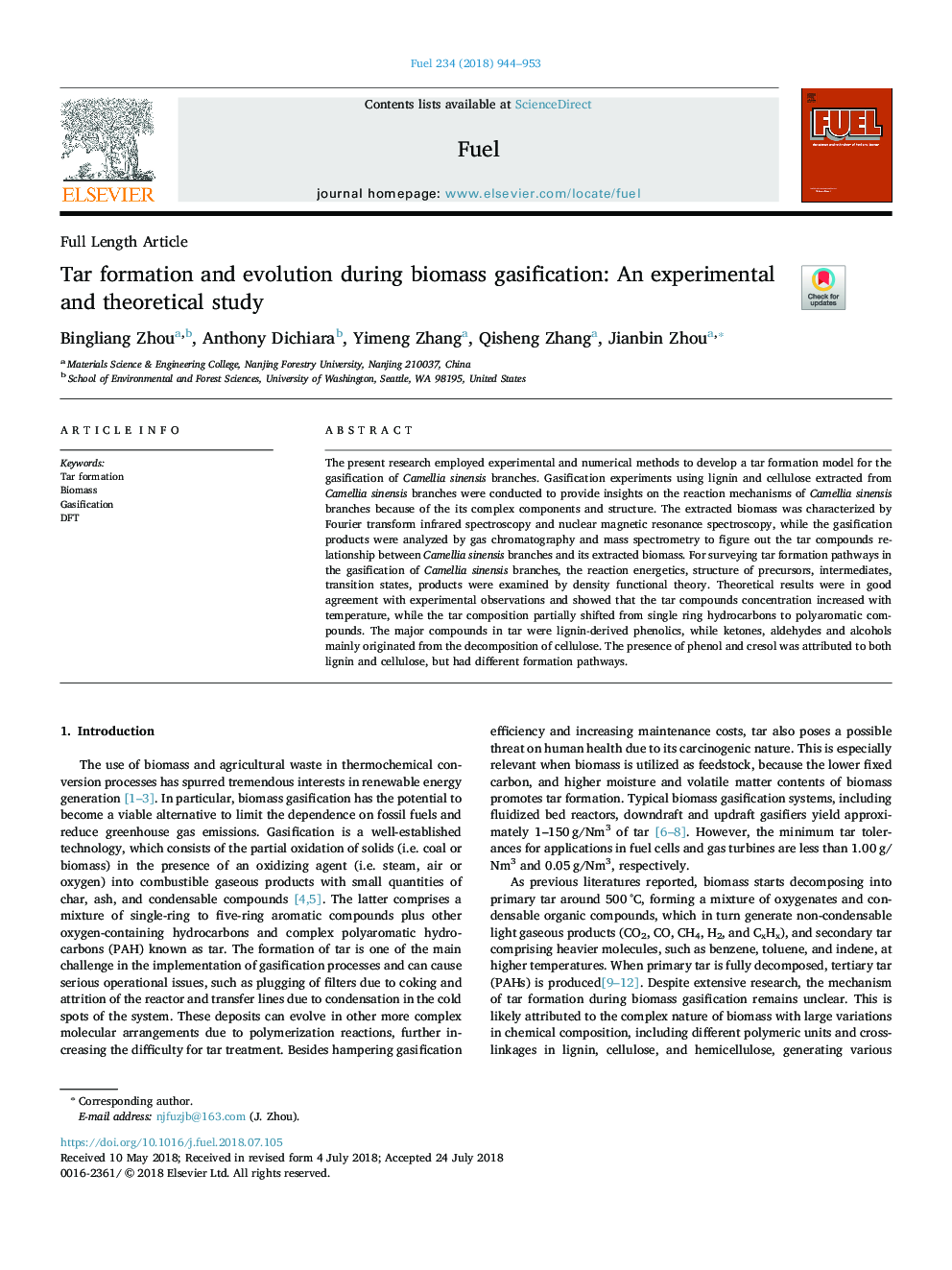| Article ID | Journal | Published Year | Pages | File Type |
|---|---|---|---|---|
| 6630137 | Fuel | 2018 | 10 Pages |
Abstract
The present research employed experimental and numerical methods to develop a tar formation model for the gasification of Camellia sinensis branches. Gasification experiments using lignin and cellulose extracted from Camellia sinensis branches were conducted to provide insights on the reaction mechanisms of Camellia sinensis branches because of the its complex components and structure. The extracted biomass was characterized by Fourier transform infrared spectroscopy and nuclear magnetic resonance spectroscopy, while the gasification products were analyzed by gas chromatography and mass spectrometry to figure out the tar compounds relationship between Camellia sinensis branches and its extracted biomass. For surveying tar formation pathways in the gasification of Camellia sinensis branches, the reaction energetics, structure of precursors, intermediates, transition states, products were examined by density functional theory. Theoretical results were in good agreement with experimental observations and showed that the tar compounds concentration increased with temperature, while the tar composition partially shifted from single ring hydrocarbons to polyaromatic compounds. The major compounds in tar were lignin-derived phenolics, while ketones, aldehydes and alcohols mainly originated from the decomposition of cellulose. The presence of phenol and cresol was attributed to both lignin and cellulose, but had different formation pathways.
Keywords
Related Topics
Physical Sciences and Engineering
Chemical Engineering
Chemical Engineering (General)
Authors
Bingliang Zhou, Anthony Dichiara, Yimeng Zhang, Qisheng Zhang, Jianbin Zhou,
